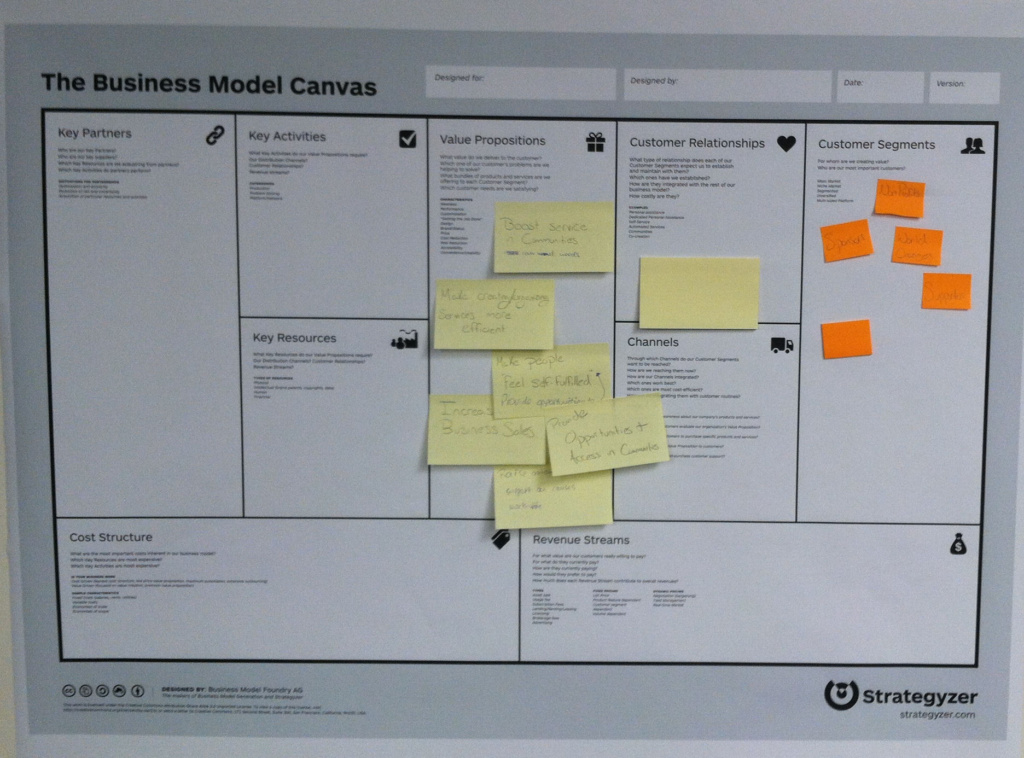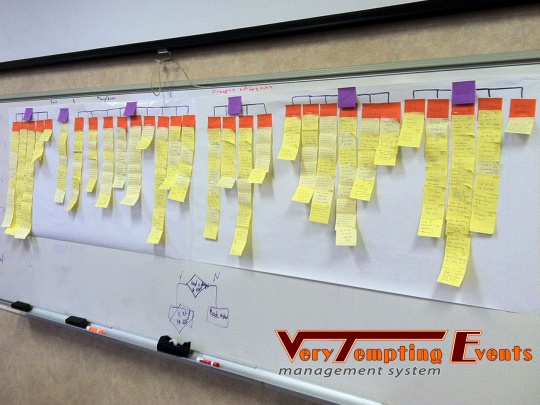STARTUP CLASS MeWe
MeWe is a unique platform that aims to facilitate community service by bringing together people who want to change the world with non-profit organizations and local businesses. The project focused heavily on exploring the value proposition of a social entrepreneurship idea through the development of a business model and its evaluation via customer discovery.
Design Process
Although this was mainly a project about building your entrepreneurial muscles, the stages we went through were extremely similar, if not the same, to user research in addressing a specific problem. In this respect, the following steps can be applied to any endeavor focusing on researching the value proposition of a potential technology-enhanced idea. The initial stage of the project involved ideation - problem identification and team formation. During this stage, we brainstormed ideas of problems we could solve and a draft diagram of means and methods we could use (see figure). My dominant idea, which has evolved through a MOOC on Creativity, Innovation, and Change along with someone from Dubai, involved a platform for supporting everyday goodness and positivity by sharing life-changing practices, humanitarian, and volunteering activities. Other ideas involved a physical (and virtual) museum about the human potential and a smart GPS recording and geotagging system for cameras. After a couple of weeks discussing each others' ideas, we decided on the projects and the teams. I succeeded in bringing my Indian collaborator from Dubai on board developing our social entrepreneurship idea, along with an undergraduate student from class, setting off to our exciting adventure to change the world!
After multiple meetings, our design vision evolved to inspire hope and change by creating a place that allows people and communities to connect to other people, non-profits, and sponsors with similar goals/intentions. The next step was to start building a business model by defining the customer segments and value propositions. In doing so, we employed the Business Model Canvas as an appropriate tool for mapping, discussing, and designing a business idea. Our customer segments, as the only factual information of the canvas, where defined to be world changers (people with a cause), supporters or followers, non-profit organizations, and sponsors (see figure on the left). We developed our initial hypotheses about the pains and gains of each segment and based our value propositions on them; an example for world-changers was that people want to feel "self-fulfilled," thus we would boost community service by making the creation/organization of services more efficient. We then used the Known-Unknown Analysis Quadrant to organize our thoughts around the level of certainty for each one of our assumptions and devise a research plan for acquiring greater insights for each segment (similar to a Learning Plan in UX Research).
Similar to Agile methodologies, the Lean Startup process is based on an iterative cycle involving building hypothesis, testing (measuring), and learning over and over again, until we acquire a deep understanding of the ideas under investigation. In our case, we had to Get Out of the Building and start talking to stakeholders in order to understand their pains and gains. This stage of Customer Discovery was probably the most significant component in the process and lasted for approximately two months. Each one of the team members was assigned a customer segment to focus on; I undertook probably the most challenging and diverse one, the NPOs. I developed the questions for all the segments using a mind map for each group, as I had the most experience in UX Research among my teammates. I also deployed an online questionnaire for accessing a larger number of people (world-changers and followers) from around the world, taking advantage of my involvement in the MOOC that sparked this project. Moreover, we were assigned a mentor acting as the client who observed our progress from the interviews and provided guidance (e.g., I realized the importance of archetypes in channeling the information to the decision maker within an organization).
Out of a total 62 interviews, I conducted 10 interviews with NPO stakeholders (i.e., campaign organizers, volunteer leads, fundraising and marketing directors from national NPOs as well as global agencies like Greenpeace and ActionAid), 11 world changers, and 2 sponsors from the US, Greece, Dubai, and the UK. It was really interesting to realize the struggles of world changers in taking action and creating an NPO (especially in the crisis-struck Greece), indicating the need for facilitating the transition from one segment to the other. We also gathered 105 submissions from our online questionnaire; all data were analyzed and grouped into clusters based on different criteria from our value propositions (e.g., "how often do you support online causes or petitions?" for followers, or "how do you recruit volunteers?" for action-based NPOs). It was really important to understand the different roles of archetypes (i.e., user, influencer, recommender, decision-maker) within each segment, which helped me build a detailed diagram of how decisions to join the platform move through the organization chart of the NPO segment. Using the information from Customer Discovery we designed the first draft of our business model, illustrating how stakeholders communicate and revenue is created (see figure). Sketching was used to illustrate the creation of a project on the platform (e.g., "Felicia's Food") and the process for getting revenues through supporters (using social media) and backing of the project from local businesses (e.g., a restaurant).
The final stage was Customer Validation, in which we pulled all the data together and attempted to identify if the proposed platform could address the problem. As part of the process, we validated that there was a market for the envisioned service and there was indeed a problem for our major segments: the world-changers, as agents of change struggling to have a social impact, and the NPOs, facing constant challenges for volunteer recruiting and fundraising. Before moving to develop our MVP (minimum viable product) and validate it with our customer segments, we eventually decided to 'pivot' and address an identified obstacle, that large NPOs are not willing to risk their reputation by backing projects of questionable credibility. During our Pivot Presentation, we presented our research process, our customer discovery, the most significant findings, and the proposed business model. I designed and set up the whole presentation in Prezi, which was met with enthusiasm and accolades from instructors and peers (watch video excerpt).
Video excerpt from the Pivot Presentation.
This project was an immense opportunity to validate a social entrepreneurship idea of mine by interviewing a large number of stakeholders and synthesizing their responses in understanding their pains and ways to increase their gains. This process helped me improve my interview capacity considerably in testing user/customer assumptions, a significant skill for anyone working in UX Research and Design.
OTHER DESIGN PROJECTS
Similar design projects during my PhD studies
-

University-Restaurant Insight Finder
Design ProjectInformation Visualization project using Yelp datasets


















